German Orders of Battle of 11 May 1942 and the Planning of the Summer Offensive (Operation Blue).
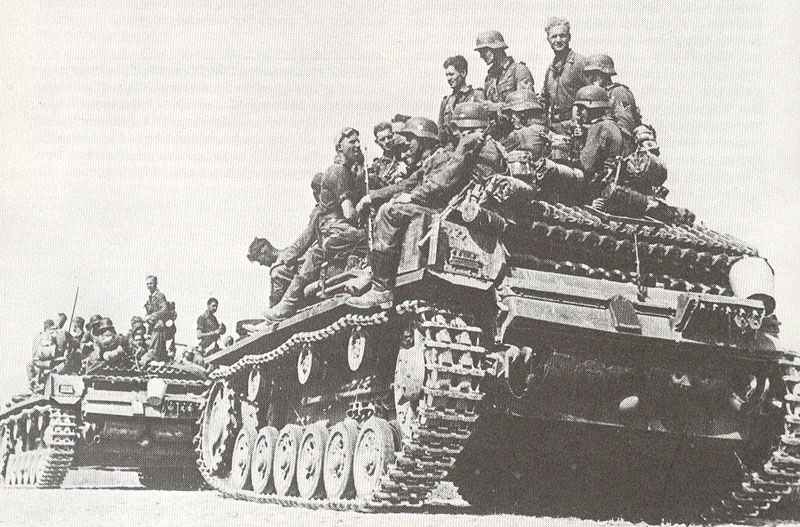

German Orders of Battle of 11 May 1942
Table of Contents
Schematic layout of the German Wehrmacht from May 11, 1942:
Abbreviations:
Inf.Div. = infantry division
mot.Inf.Div. = motorized infantry division
Pz.Div. = Panzer (tank, armoured) Division
Sec.Div. = Security Division
Inf.Reg./Rgt. = Infantry Regiment
Brig. = Brigade
Btl. = Battalion
Cav. = Cavalry
Mt. = Mountain troops
Air = Airborne troops
Gr. = Group (battle group)
W.B. = Wehrmacht commander
Befh. r.H.G. = Commander Rear Army Area
Eastern Front
Army Group South
| Army | Corps | Divisions |
|---|---|---|
| Reserves: Hungarian 2nd Army (staff) | Hungarian IV Corps (in transit) | 25 Pz.Div. |
| 11th Army (Crimea) | Reserves | 72. Inf.Div., 10 Romanian Inf.Div., 1/3 of 73 Inf.Div. |
| LIV | 22, 24 Inf.Div., 18 Romanian Inf.Div., 1 Romanian Mt.Div. | |
| Romanian Mountain Corps | Gr. Schröder (coastal defence), 4 Romanian Mt.Div. | |
| XXX (Reserves: Gr. Ritter [coastal defence], Brig. Groddeck) | 50, 132, 170 Inf.Div., 28 Light Div., 22 Pz.Div. | |
| XXXXII | 46 Inf.Div. | |
| Romanian VII | 19 Romanian Inf.Div., 8 Romanian Cav.Div. | |
| Army Group v.Kleist | Reserves | 2/3 of 60 mot.Inf.Div., 16 Pz.Div., 389 Inf.Div. |
| III mot. | 14 Pz.Div., 100 light Div., 1 Mt.Div., 1/3 of 60 mot.Inf.Div., Croatian Inf.Rgt. 369, Wallonian Btl. 373 | |
| Group Kortzfleisch (staff XI Corps; Reserves: 20 Romanian Inf.Div.) | 2 Romanian Inf.Div., 298 Inf.Div., 2/3 of 68 Inf.Div. | |
| VI Romanian Corps (subordinated to Group Kortzfleisch) | 1, 4 Romanian Inf.Div. | |
| 1 Panzer Army (subordinated to Army Group v.Kleist) | Reserves | Gr. v. Förster (incl. 5 Romanian Cav.Div.), Romanian Cav.Corps (with 6 Romanian Cav.Div.) |
| XIV mot. | LSAAH, SS-Wiking, 13 Pz.Div., 125 Inf.Div., Slovak Fast Div., 2/3 of 73 Inf.Div., Sec.Rgt. 4, 1 Rgt. of 444. Sec.Div. | |
| XXXXIX Mt. | 4 Mt.Div., 198 Inf.Div., Italian 3 Celere-Div., 1 Rgt. of 213 Sec.Div., Italian 6 Bersaglieri-Rgt. | |
| Italian Fast Corps | Italian 9 Pasubio, Italian 52 Torino Div. | |
| 17 Army (subordinated to Army Group v.Kleist) | LII | 9, 94, 111 Inf.Div. |
| IV | 76, 257, 295 Inf.Div., 1/3 of 68 Inf.Div. | |
| XXXXIV | 97, 101 light Div., 384 Inf.Div. | |
| 6 Army | Reserves | 113 Inf.Div. |
| VIII | 62 Inf.Div., 108 Hungarian light Div., 454 Sec.Div. | |
| LI | 44, 71, 297 Inf.Div. | |
| XVII (Reserves: Slovak Art.Rgt. 31) | 79, 294 Inf.Div. | |
| XXIX | 57, 75, 168 Inf.Div. | |
| 2 Army | Reserves | 102 Hungarian light Div., Hungrian III Corps (6, 7, 9 Hungrian Light Div.) |
| XXXXVII mot. + LV Corps | 9 Pz.Div., 16 mot.Inf.Div., 45, 95 Inf.Div., SS-Brigade 1, Gr. Gollwitzer (88 Inf.Div.), Gr. Moser (299 Inf.Div.) | |
| Befh. H.G. Süd | Hungarian Occupation Group | parts of 213, 444 Sec.Div. each, 105 Hungarian Light Div. |
| OKH-Reserves at Army Group South | all staffs: 4 Pz.Army, LVII mot., XXIV mot., XXXX mot., V, VII, XIII | 3 Pz.Div., 3 mot. Inf.Div. (refreshing), GD (refreshing); all in transit: 305, 323, 383, 387 Inf.Div. |
Army Group Center
| Army | Corps | Divisions |
|---|---|---|
| Reserves | parts of 6 Pz.Div., bulk of 7 Pz.Div. (all in transit to the west) | |
| 2 Panzer Army | Reserves | 707 Inf.Div. |
| XXXV | 262, 293 Inf.Div., 29 mot.Inf.Div. | |
| LIII | 56, 112, 134, 296 Inf.Div., 25 mot.Inf.Div. | |
| XXXXVII mot. | 4, 17, 18 Pz.Div., bulk 339 Inf.Div., 2/3 of 208 Inf.Div., 1/2 of 211 Inf.Div., 1/3 of 216 Inf.Div. | |
| 4 Army | Reserves: Div.staff 442 zbV. (with Gr. v.Gablenz), Gr. AK.302 | 10 mot.Inf.Div. |
| LVI mot. (Staff of 331 Inf.Div., with Luftwaffen combat units Groups Ramm and Reichelt) | 267, 331 Inf.Div., 2/3 of 385 Inf.Div., parts of 211, 216 Inf.Div. each, parts of 403 Sec.Div., Gr. Schlemm (Luftwaffen unit) | |
| XXXXIII | 31, 137 Inf.Div., 19 Pz.Div., 2/3 of 131 Inf.Div., 1/3 of 34 Inf.Div., parts of 211 Inf.Div., parts of 286. Sec.Div. | |
| XII (with groups Werner and Haehnle) | Battlegroup south (from remnants of 52, 260, 263 Inf.Div.), 98, 268 Inf.Div., each 1/3 of 34, 131 Inf.Div., parts of 216 Inf.Div., Luftwaffen unit | |
| 3 Panzer Army | Reserves | 17 Inf.Div., parts of Brigade 900 |
| XX | 20 Pz.Div., 183, 292, 258 Inf.Div., 2/3 of 255 Inf.Div. | |
| IX | 7, 35, 78, 87, 197, 252 Inf.Div., 1/3 of 255 Inf.Div. | |
| XXXXVI mot. | 23 Inf.Div., bulk of 5 Pz.Div. | |
| 9 Army | XXXXI mot. | 161, 342 Inf.Div., 36 mot.Inf.Div., 1/3 of 129 Inf.Div. |
| VI | 6, 26, 256 Inf.Div., parts of 339 Inf.Div. | |
| Northern front of XXVII | 206, 251 Inf.Div., 14 mot.Inf.Div., SS-Reich, 1/3 of 216 Inf.Div., parts of 328 Inf.Div. | |
| Southern front of XXVII | 1 Pz.Div., parts of 2 Pz.Div., each parts of 110, 208 Inf.Div., 2/3 of 86 Inf.Div. | |
| XXIII | 102, 253 Inf.Div., bulk 110 Inf.Div., 2/3 of 129 Inf.Div., SS-Cav.-Brig. | |
| Gr. Raus (staff 6 Pz.Div.) | parts of 6. Pz.Div., 1/3 of 86 Inf.Div., bulk of 328 Inf.Div., Gr. Decker (parts of 2 Pz.Div.) | |
| Gr. Esebeck (staff 2 Pz.Div.) | 246 Inf.Div., parts of 2, 5 Pz.Div. each | |
| direct subordinated to Army Group Center | LIX | 205, 330 Inf.Div., 1/3 of 83., 218, 328 Inf.Div. each, Gr. Schröder |
| Befh. H.G. Mitte | Gr. v.Schenckendorf | 11 Pz.Div., 221 Sec.Div., bulk 286 Sec.Div., parts 403 Sec.Div., staffs of 201+203 Sec.Brig. |
Army Group North
| Army | Corps | Divisions |
|---|---|---|
| 16 Army | XXXIX mot. | Gr. Lang (parts of 218 Inf.Div.), 1/3 of 121, 122, 123, 329 Inf.Div. each, bulk of 8. Pz.Div. |
| II (with Gr. Eicke and staff SS-Totenkopf) | SS-Totenkopf, 12, 30, 32, 290 Inf.Div., 1/3 of 218, 225 Inf.Div. each, bulk of 123 Inf.Div., parts of 281 Sec.Div. | |
| X | Gr. Meindl (Luftwaffen field regiments), 5, 8 light Div., 18 mot.Inf.Div., 2/3 of 122, 329 Inf.Div. each, 1/2 of 7 Mt.Div., parts of 81 Inf.Div. (incl. staff), Police Rgt. North, 1 detachment of Police-Rgt. 203 | |
| 18 Army | Reserves | 12. Pz.Div. (split) |
| XXXVIII | 250 Spanish Inf.Div., 58, 126 Inf.Div., SS-Brigade 2, parts 285. Sec.Div. (incl. staff) | |
| I (with Gr. Knieß [staff 215 Inf.Div.], Gr. Köchling [staff 254 Inf.Div.], Gr. Wandel [staff 121 Inf.Div.]) | 215, 254, 291 Inf.Div., bulk of 61, 121 Inf.Div. each, SS-Police Div., SS-Rgt. 9, parts of 81, 93, 223, 225 Inf.Div. each, 1/3 of 212 Inf.Div., 20 mot.Inf.Div. | |
| XXVIII (with Gr. Sponheimer [staff of 21 Inf.Div.]] | 11, 21, 96, 269 Inf.Div., parts of 61, 93 Inf.Div. each, bulk of 217, 225 Inf.Div. each, parts 5 Mt.Div., parts 207 Sich.Div. staffs of 93 Inf.Div. and 12 Pz.Div. | |
| XXVI | 1, 227 Inf.Div., bulk of 223 Inf.Div., V/LSAAH | |
| L (with Gr. Jeckeln and sub-group Neidholdt) | SS-Norwegen, parts 5 Mt.Div. (with staff), 1/3 of 385 Inf.Div., parts 93 Inf.Div., bulk 212 Inf.Div., parts 285 Sec.Div., staff of 225 Inf.Div. | |
| Befh. H.G. Nord | 207 Sec.Div., parts 281 Sec.Div. |
OKW Theaters of War
North
| Army | Corps | Divisions |
|---|---|---|
| AOK Lapland | Reserves: staff XVIII Mt.Corps (In the approach) | 2/3 of 163 Inf.Div. (in the approach) |
| III Finish (reserves: parts 7 Mt.Div.; in the approach) | 3 Finish Inf.Div., SS-Nord, I Div. (?), reinforced Mt.Jaeger.Rgt. 139 | |
| XXXVI Mt. | 169 Inf.Div., reinforced Inf.Rgt. 324 | |
| Mt.Corps Norway | 2, 6 Mt.Div., 1/3 of 214 Inf.Div., parts of 69 Inf.Div. | |
| AOK Norway | Reserves | 3 Mt.Div., 25 Pz.Div. (at Oslo) |
| LXXI | 199, 230, 270, 702 Inf.Div. | |
| XXXIII | 181, 196 Inf.Div. | |
| LXX | 280, 710 Inf.Div., 2/3 of 214 Inf.Div., bulk 69 Inf.Div. |
Army Group D (Commander West)
| Army | Corps | Divisions |
|---|---|---|
| Reserves | 370, 371, 376, 377 Inf.Div. (all 19th wave and in formation), Rgt. General Göring | |
| Commander of the German troops in the Netherlands | Div.Staff zbV 240 | 167, 719 Inf.Div., 82 Inf.Div. (in removal) |
| 15 Army | Reserves | 10 Pz.Div., 7 Air Div. |
| XXXVII | 106, 304, 306, 321 Inf.Div. | |
| XXXII | 302, 332, 711 Inf.Div. | |
| LX | 319, 320, 716 Inf.Div. | |
| 1 Army | Reserves | 6 Pz.Div. (in the approach), Pz.Brig. 100 (without 1st detachment) |
| XXXXV | 337, 712 Inf.Div. | |
| 7 Army | Reserves | 24 Pz.Div. (bulk, in removal), 7 Pz.Div. (parts, in removal), 15. Inf.Div. (in the approach) |
| XXV | 333, 335, 336, 709 Inf.Div. | |
| XXXI | 327, 708, 715 Inf.Div. |
Southeast
| Army | Corps | Divisions |
|---|---|---|
| 12 Army | Reserves | Inf.Rgt. 440 |
| Fortress Crete | Fortess-Div. Kreta | |
| Commanding General and Commander in Serbia | 704, 714, 717, 718 Inf.Div. |
Africa
| Army | Corps | Divisions |
|---|---|---|
| Panzer Army Africa | Reserves | Italian 25. Bologna, Italian 60 Sabrata Div. (in Cyrenaika) |
| DAK | 15, 21 Pz.Div. | |
| Italian XX mot. | Italian 132 Pz.Div. Ariete, Italian 101 mot.Inf.Div. Trieste | |
| Italian XXI | 90 light Africa-Div., Italian 102 Trento-Div. | |
| Italian X | Italian 27 Brescia, Italian 17 Pavia-Div. |
Chief of Army Armament and Commander of the Reserve Army
in Germany: 7th Mt.Div. (parts; in WK XIII)
Denmark: 416th Inf.Div.
Operation Blue – Planning the German Summer Offensive 1942 in Russia
In the autumn of 1941, it became increasingly obvious to German officials that Operation Barbarossa could not be completed that year, and they began to think about continuing operations in 1942.
For a moment between September and November, there was hope of reaching the industrial region around Moscow and the oil fields in the Caucasus by the end of the year. However, even before the Red Army could defeat the German units at the southern end of the Eastern Front at the end of November 1941 and recapture Rostov, all German hopes of reaching the Caucasus in 1941 had vanished.
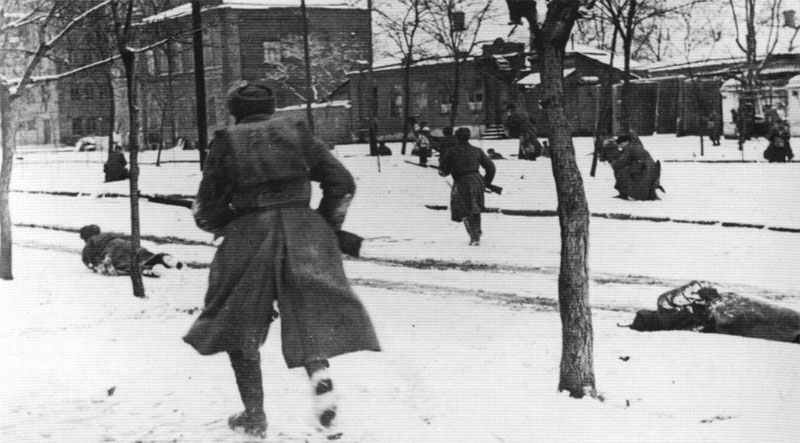
At the same time, as the euphoria after the great victories of October in the central section faded and the fierce fighting continued, it was clear to the Germans that even if they could still take Moscow, there was no prospect of advancing further east.
The dramatic development in December, when the German advanced units were first halted and then driven back by the Red Army, made it clear that any new campaign in 1942 would have to start considerably behind the initial positions envisaged as late as November.
In addition, there were further difficulties for any German offensive plan for 1942. The losses of soldiers and horses of the German armies in Russia could not be replaced by the trickle of replacements. Although great efforts were made to raise new divisions, draft more men and requisition additional horses, there was not enough of anything to bring the Eastern Army back to the strength of June 1941.
The losses in horses were doubly heavy because of the equally enormous losses in motor vehicles during the winter, which made the infantry divisions even more dependent on horse transport than they already were.
This circumstance alone made a war of movement on more than one front section at a time completely impossible.
In July 1941, in view of the expected rapid victory over Soviet Russia, armament priorities had been shifted from the army to the air force and navy. This step was reversed in January 1942, when the Army again enjoyed top priority. But this measure could have an effect from the summer of 1942 at the earliest, and for the time being would by no means suffice to make up even for the losses of 1941.
However, the new man in charge of German arms production, Albert Speer, immediately showed that he was efficient and ruthless, both of which were important qualifications in Nazi Germany. He managed to increase arms production, but the Wehrmacht still had fewer tanks in June 1942 and the Luftwaffe had exactly as many aircraft as exactly one year earlier.
To make matters worse, the continuing naval and air war with Britain and now the United States made it impossible for the German Reich to gear its arms production to the needs of the Eastern Front and also required it to use more and more forces on other fronts.
These two circumstances left Hitler and his advisers with only two options. The Wehrmacht could remain on the defensive in the East or begin an offensive on one section of the front. The option of attacking all sections of the front simultaneously, as in the summer of 1941, was no longer available under the blows of the Red Army and the demands of the other theatres of war.
There is no evidence that a fundamentally defensive strategy in the East was ever seriously discussed in 1942. The alternative Mediterranean strategy, which was repeatedly put forward by the Kriegsmarine, had no effect on Hitler, who saw the Mediterranean as Italy’s area of expansion and Germany’s as lying to the east.
If von Brauchitsch had ever drawn up a strategic concept for the next year before his dismissal in December 1941, there is no longer any trace of it. General Halder, the Chief of Staff, who now had to work even more closely with Hitler, certainly never proposed a strategy of his own and his thoughts were even more fixed on the ground war than those of his Führer.
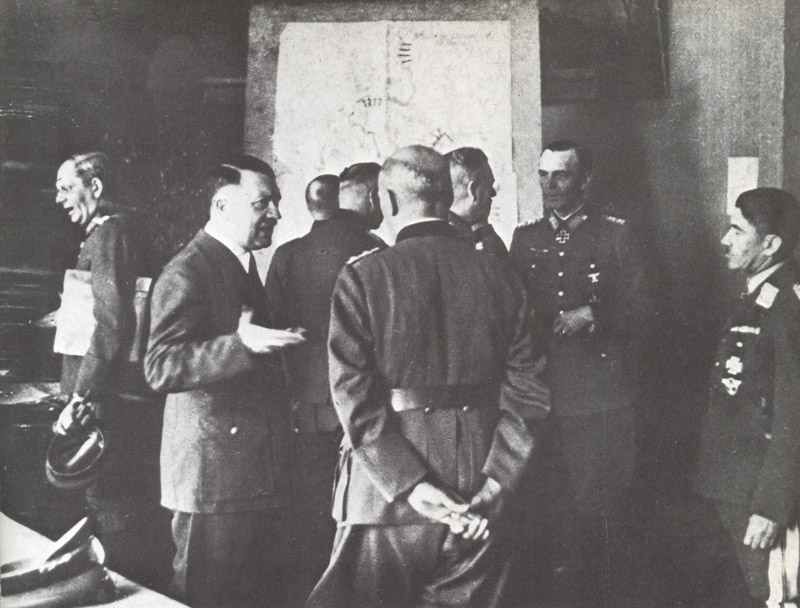
This time, however, the only reasonable strategy in the east had an unusual degree of unanimity among the German top brass. Army Group South had already held a fairly stable front over the winter, and the weather there would permit German offensive operations sooner than further north. It was therefore assumed that the previously necessary clearing operations in the south, such as clearing the Crimea and breaking up the Izyum pocket, would be completed well before the main offensive. This would not be feasible with Army Group Centre or North. A major offensive in southern Russia would also provide more time with better weather.
The second reason that led to the decision of an offensive in the south was the prospect of important raw material areas and key strategic positions within easy reach.
The conquest of the oil fields in the Caucasus would have a threefold effect on the war situation. It would solve the shortage of petroleum products from which the German mechanized forces, warships and aircraft were suffering, and also make the barely operational Italian navy mobile again. In addition, the dangerous consequences of air attacks on the synthetic fuel industry in Germany or the Romanian oil fields would be less catastrophic.
The further advantage was that the opposite would be true for the Soviets if they lost a large part of their oil resources. Even if the Western Allies could help out with oil and fuel supplies, it would be at the expense of other supplies of armaments and utilities.
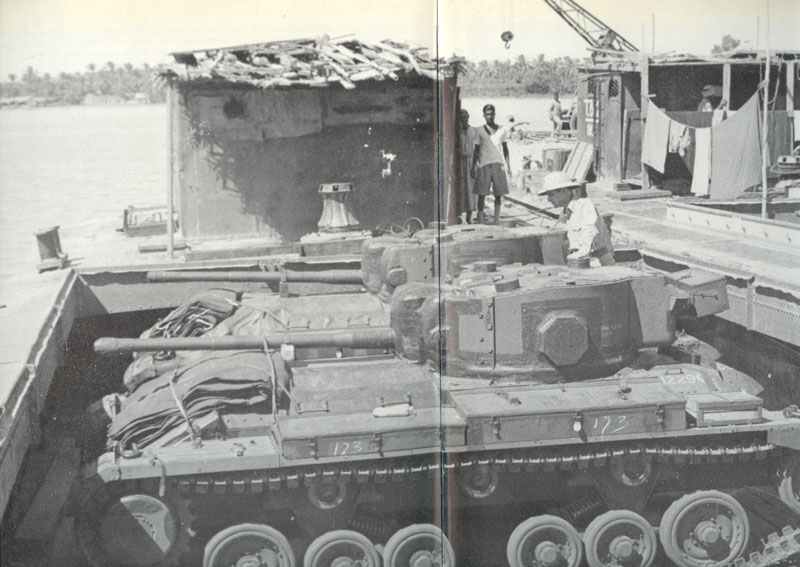
And ultimately German troops in the Caucasus would fulfil the prerequisite for an operation against Iraq or Iran from the north which would collapse the Allied position in the Middle East, bring the oil of that region from the Allies to the Axis powers, and provide a real opportunity to meet the Japanese and close the southern supply route of the Western Allies into the Soviet Union.
And on the way to these great opportunities the Germans could still take control of the parts of the important industrial region in the Donetsk Basin still held by the Soviets, as well as the rich agricultural areas in the north of the Caucasus. This made the whole thing even more promising.
Another operation also seemed important to the Germans in 1942, the taking away of Leningrad. The surprising success of the Russians in supplying this city in winter via the frozen Lake Ladoga and the refusal of the Finns to attack it from the north made it clear to Hitler that only a massive assault could end the siege and establish a secure land link with the ally.
This undertaking would in turn set the stage for cutting the Soviet Union’s links to the Western Allies via Murmansk.
The problem with the projected attack on Leningrad, however, was that there were no troops available for it and not enough air and artillery support on the ground.
The solution to this, however, which Hitler and his staff had in mind, was somewhat bizarre. He decided, less surprisingly, that this operation could not be carried out simultaneously with the main offensive in the south. But since this main operation had to be preceded by two preparatory operations, namely the clearing of the Crimea and the elimination of the Izyum pocket, the troops committed to the Crimea under von Manstein would then be removed to the conquest of Leningrad, while the others were to push further east to take part in the main offensive in the southern section of the front.
In practice, this meant that during the period of the main German offensive in 1942, the divisions of an entire army were on railway trains to be moved from the southernmost to the northernmost part of the Eastern Front.
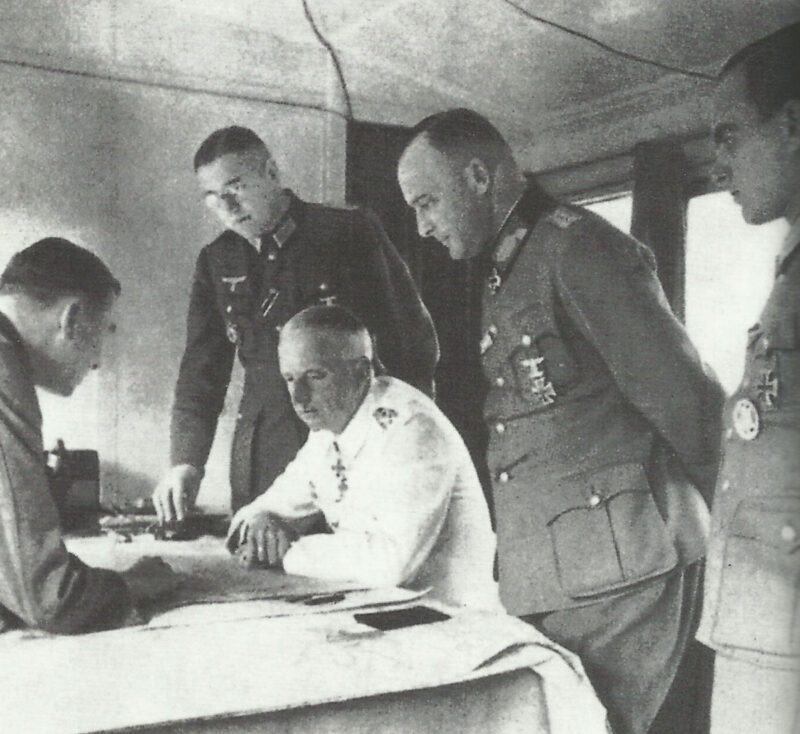
Two exceptional circumstances still need to be pointed out for the German plans for 1942.
Firstly, it was assumed that the forces of Army Group South were sufficiently strong to conquer the Caucasus, which would then inevitably have led to the capture of the entire Russian Black Sea coast. Nevertheless, Hitler did not conclude from this that the evacuation of the Crimea was then also unnecessary, since without the Russian Black Sea ports any Soviet force there would inevitably be lost.
Thus, to avoid the risk posed by unsupplied Soviet troops in the Crimea, a time-consuming and costly operation to clear the peninsula and capture Sevastopol with strong artillery and air forces was preceded.
Secondly, Stalingrad was not originally assigned any attention at all. It is a bitter irony that the city, where one of the largest and most decisive battles of the Second World War was to take place, initially played no role at all in German planning.
References and literature
Der 2. Weltkrieg (C. Bertelsmann Verlag)
Zweiter Weltkrieg in Bildern (Mathias Färber)
A World at Arms – A Global History of World War II (Gerhard L. Weinberg)
Der Grosse Atlas zum II. Weltkrieg (Peter Young)
Krieg der Panzer (Piekalkiewicz)
Kriegstagebuch des Oberkommandos der Wehrmacht, Band 1-8 (Percy E. Schramm)



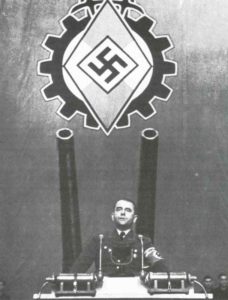
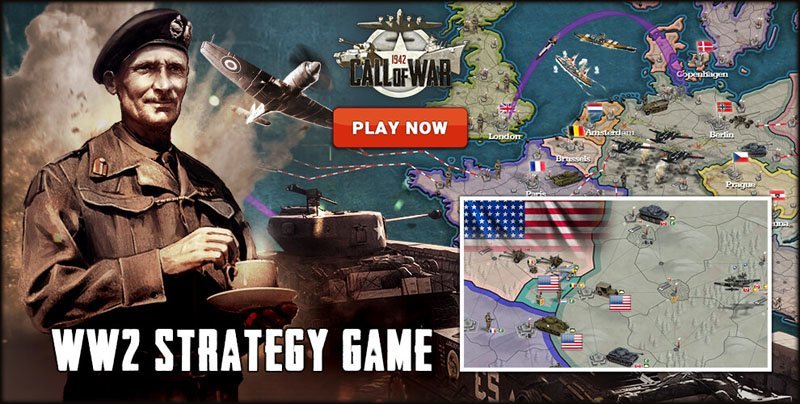
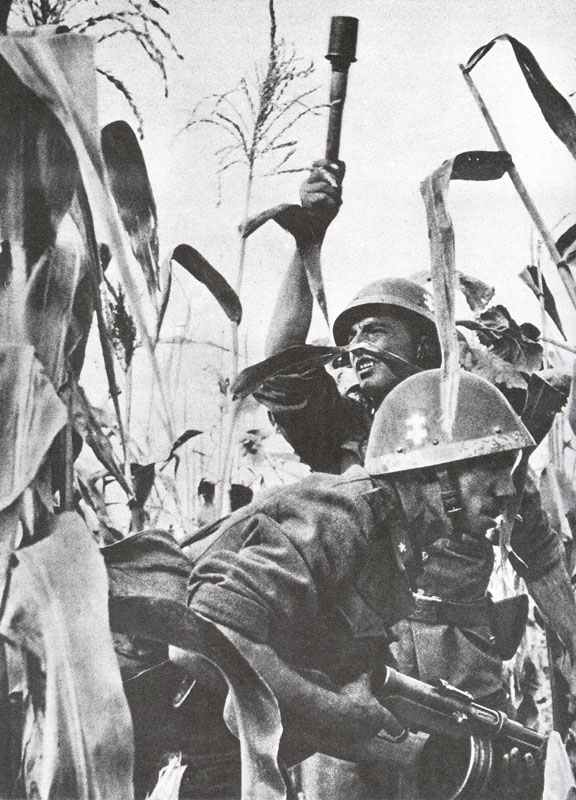
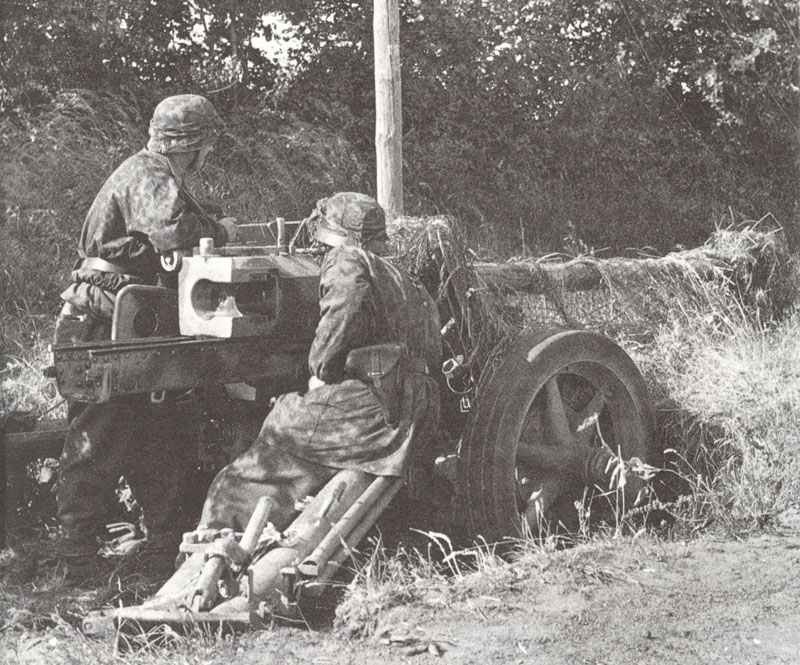
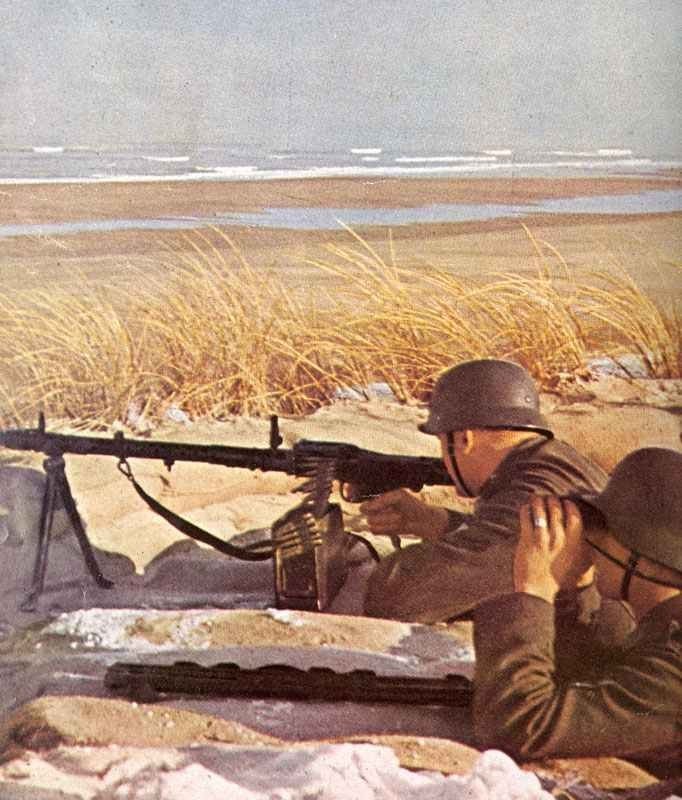
The notion that somehow Axis forces advancing through the Caucasus could somehow link up with the Africa Korps in 1942 was/is lunacy. It would’ve been impossible in peace time driving a motor car from both directions!
The Germans’ Summer ’42 offensive in the East was a massive failure for the 3rd Reich and led to future disasters. hitler failed to fully mobilize his nation for a war against the largest nation and largest military in the world in 1941. He would not fully mobilize Germany until after Stalingrad – far too late. UK, USSR, and US all fully mobilized their nations as soon as they entered the war.
But of all hitler’s mistakes, declaring war on the US seems to be the most puzzling, unless viewed through hitler’s psychotic racial calculus.